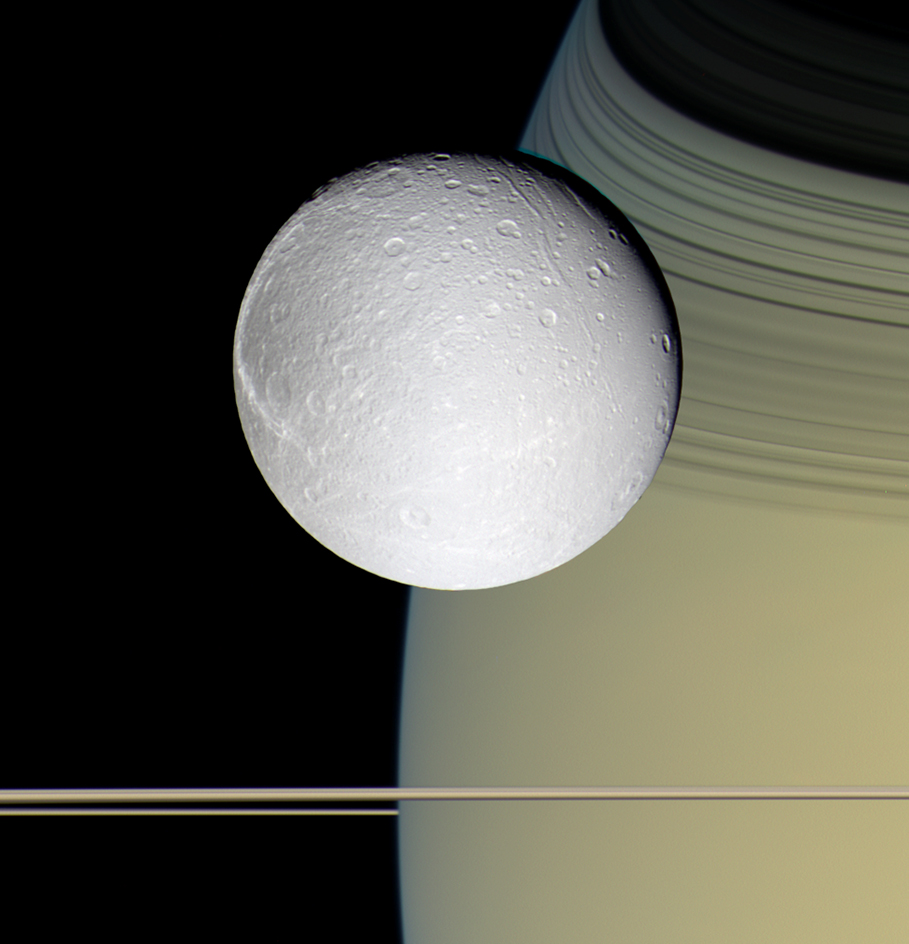Dione << dy OH nee >> , the fourth largest moon of Saturn, has an icy surface marked by impact craters and bright, wispy streaks. Dione’s diameter measures about 696 miles (1,120 kilometers). The moon orbits Saturn every 2.74 days at an average distance of around 234,500 miles (377,400 kilometers).

Dione’s surface consists mainly of water ice. Bright, heavily cratered terrain covers one-half of the moon’s surface. The other half appears darker and, in addition to impact craters, features light streaks often referred to as “wispy terrain.” The streaks actually consist of large fractures in the ice with bright, clifflike walls. Dione’s surface also includes regions of smooth plains. Scientists believe that ice flows smoothed the surface in these areas.
Because the surface shows evidence of relatively recent ice flows, scientists once thought that Dione must contain ammonia. Ammonia lowers the melting temperature of water, enabling ice to flow more easily from the interior to the surface. However, spacecraft measurements of Dione’s surface have shown no sign of ammonia.
Dione shares its orbit about Saturn with two smaller moons: (1) Helene and (2) Polydeuces. Helene orbits ahead of Dione, while Polydeuces orbits behind Dione. The combined gravitational pulls of Dione and Saturn keep Helene and Polydeuces near these special positions, known as Lagrange points.
The Italian-born French astronomer Giovanni Domenico Cassini discovered Dione using a telescope in 1684. In the early 1980’s, the United States space probes Voyager 1 and Voyager 2 flew by Dione. The probes took low-resolution photographs of the wispy terrain. However, scientists could not clearly identify the cause of the bright streaks. The U.S. Cassini spacecraft photographed Dione in 2004 and again in 2005, when it flew within about 310 miles (500 kilometers) of the moon. Cassini’s high-resolution images showed that the wispy terrain consisted of ice cliffs. In 2016, Cassini gathered evidence suggesting that an ocean of liquid water may lie beneath Dione’s icy surface.
See also Cassini; Satellite (The middle-sized icy satellites of Saturn and Uranus); Saturn.
